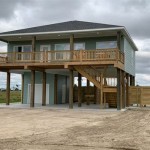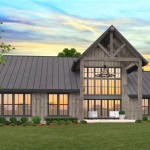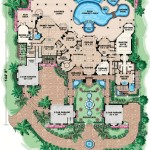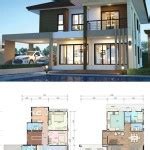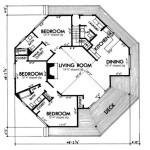Eco friendly house plans are blueprints and designs for constructing homes that prioritize environmental sustainability. These plans aim to minimize the ecological impact of a building throughout its lifecycle, from the initial construction to the ongoing operation and maintenance. For instance, an eco friendly house plan might incorporate energy-efficient appliances, sustainable building materials, and renewable energy systems, such as solar panels.
Environmental concerns have become increasingly prominent in the building industry, as the construction and operation of buildings contribute a significant portion of global greenhouse gas emissions. Eco friendly house plans offer a solution by promoting resource conservation, minimizing waste, and reducing the carbon footprint of a home. As a result, they are becoming more popular among environmentally conscious homeowners and developers.
In this article, we will explore the key principles of eco friendly house plans, discuss their benefits and challenges, and provide practical tips for incorporating sustainable practices into your own home design.
When designing an eco friendly house, there are several key principles to consider:
- Energy efficiency
- Sustainable materials
- Renewable energy
- Water conservation
- Indoor air quality
- Waste reduction
- Site orientation
- Landscaping
- Life cycle assessment
- Cost-effectiveness
By incorporating these principles into your house plan, you can create a home that is not only environmentally friendly but also healthy, comfortable, and affordable to operate.
Energy efficiency
Energy efficiency is a key principle of eco friendly house plans. By designing a home to be energy efficient, you can reduce your energy consumption and lower your utility bills. There are many ways to improve the energy efficiency of your home, including:
- Insulating your home
Insulation helps to keep your home warm in the winter and cool in the summer, reducing the amount of energy you need to heat and cool your home.
- Using energy-efficient appliances
Energy-efficient appliances use less energy to operate, saving you money on your utility bills. Look for appliances with the Energy Star label.
- Installing energy-efficient windows and doors
Energy-efficient windows and doors help to keep the warm air in during the winter and the cool air in during the summer, reducing the amount of energy you need to heat and cool your home.
- Using renewable energy sources
Renewable energy sources, such as solar panels and wind turbines, can generate electricity for your home, reducing your reliance on fossil fuels.
By incorporating these energy efficiency measures into your eco friendly house plan, you can create a home that is comfortable, affordable to operate, and good for the environment.
Sustainable materials
Sustainable materials are an important part of eco friendly house plans. Sustainable materials are produced in a way that minimizes their environmental impact, and they are often recycled or renewable. Using sustainable materials in your home can help to reduce your environmental footprint and create a healthier living environment.
There are many different types of sustainable materials that can be used in eco friendly house plans. Some of the most common include:
- Recycled materials: Recycled materials are materials that have been used before and then processed into new products. Using recycled materials helps to reduce waste and conserve resources.
- Renewable materials: Renewable materials are materials that can be replenished naturally. Using renewable materials helps to reduce our reliance on non-renewable resources, such as fossil fuels.
- Low-VOC materials: Low-VOC materials are materials that emit low levels of volatile organic compounds (VOCs). VOCs are harmful pollutants that can cause a variety of health problems, including respiratory problems and cancer.
- Sustainably harvested materials: Sustainably harvested materials are materials that have been harvested in a way that minimizes damage to the environment. This includes using sustainable forestry practices and avoiding the use of endangered species.
By using sustainable materials in your eco friendly house plan, you can create a home that is healthy, comfortable, and good for the environment.
Renewable energy
Renewable energy is an important part of eco friendly house plans. Renewable energy sources, such as solar panels and wind turbines, can generate electricity for your home, reducing your reliance on fossil fuels. There are many different types of renewable energy systems that can be used in eco friendly house plans. Some of the most common include:
- Solar photovoltaic (PV) systems
Solar PV systems convert sunlight into electricity. Solar PV panels can be installed on your roof or on a ground-mounted system. Solar PV systems are a great way to reduce your electric bills and your carbon footprint.
- Solar thermal systems
Solar thermal systems use sunlight to heat water. Solar thermal panels can be installed on your roof or on a ground-mounted system. Solar thermal systems can be used to provide hot water for your home, swimming pool, or other applications.
- Wind turbines
Wind turbines convert the kinetic energy of the wind into electricity. Wind turbines can be installed on your property or on a community wind farm. Wind turbines are a great way to generate renewable energy and reduce your electric bills.
- Geothermal heat pumps
Geothermal heat pumps use the heat from the earth to heat and cool your home. Geothermal heat pumps are a very efficient way to heat and cool your home, and they can also reduce your electric bills.
By incorporating renewable energy systems into your eco friendly house plan, you can create a home that is powered by clean, renewable energy.
Here are some of the benefits of using renewable energy in your home:
- Reduced energy costs
Renewable energy systems can help you to reduce your energy costs by generating your own electricity or heating your home with renewable energy sources.
- Reduced carbon footprint
Renewable energy systems can help you to reduce your carbon footprint by reducing your reliance on fossil fuels.
- Increased energy independence
Renewable energy systems can help you to become more energy independent by generating your own electricity or heating your home with renewable energy sources.
- Improved home value
Renewable energy systems can add value to your home by making it more energy efficient and sustainable.
If you are considering building an eco friendly house, be sure to consider incorporating renewable energy systems into your plans. Renewable energy systems can help you to create a home that is healthy, comfortable, and good for the environment.
Water conservation
Water conservation is an important part of eco friendly house plans. By conserving water, you can reduce your water bills and your environmental impact. There are many different ways to conserve water in your home, including:
- Installing low-flow fixtures
Low-flow fixtures, such as toilets, faucets, and showerheads, use less water than traditional fixtures. Low-flow toilets can use as little as 1.6 gallons per flush, compared to 3.5 gallons per flush for a standard toilet. Low-flow faucets and showerheads can also save a significant amount of water.
- Watering your lawn and garden efficiently
Watering your lawn and garden efficiently can help to conserve water. Water your lawn and garden during the cooler parts of the day, such as early morning or late evening. This will help to reduce evaporation. Also, water your lawn and garden deeply but infrequently. This will encourage the roots of your plants to grow deeper, making them more drought-tolerant.
- Collecting rainwater
Collecting rainwater is a great way to conserve water. You can collect rainwater in a rain barrel or cistern. Rainwater can be used to water your lawn and garden, or it can be used for other non-potable purposes, such as washing your car or cleaning your windows.
- Installing a greywater system
A greywater system is a system that collects and reuses wastewater from your sinks, showers, and baths. Greywater can be used to water your lawn and garden, or it can be used for other non-potable purposes. Greywater systems can help to reduce your water usage by up to 50%.
By incorporating water conservation measures into your eco friendly house plan, you can create a home that is water-efficient and environmentally friendly.
Here are some of the benefits of conserving water in your home:
- Reduced water bills
Conserving water can help you to reduce your water bills. Water conservation measures, such as installing low-flow fixtures and watering your lawn and garden efficiently, can help to reduce your water usage and your water bills.
- Reduced environmental impact
Conserving water can help to reduce your environmental impact. Water conservation measures can help to reduce your water usage and your reliance on fossil fuels. Fossil fuels are used to pump and treat water, so conserving water can help to reduce greenhouse gas emissions.
- Increased water security
Conserving water can help to increase water security. Water conservation measures can help to reduce your water usage and your reliance on limited water resources. This can help to ensure that there is enough water for everyone, even during droughts.
If you are considering building an eco friendly house, be sure to consider incorporating water conservation measures into your plans. Water conservation measures can help you to create a home that is water-efficient, environmentally friendly, and affordable to operate.
Indoor air quality
Indoor air quality is an important part of eco friendly house plans. Indoor air quality refers to the quality of the air inside your home. The air inside your home can be polluted by a variety of sources, including building materials, furniture, cleaning products, and personal care products. Poor indoor air quality can lead to a variety of health problems, including respiratory problems, allergies, and asthma.
There are many things you can do to improve the indoor air quality in your home, including:
- Ventilating your home
Ventilating your home helps to bring fresh air into your home and remove stale air. You can ventilate your home by opening windows and doors, using fans, or installing a ventilation system.
- Using low-VOC materials
Low-VOC materials are materials that emit low levels of volatile organic compounds (VOCs). VOCs are harmful pollutants that can cause a variety of health problems, including respiratory problems and cancer. You can find low-VOC materials for a variety of applications, including paint, flooring, and furniture.
- Using natural cleaning products
Natural cleaning products are made from natural ingredients, such as vinegar, baking soda, and lemon juice. Natural cleaning products do not contain harsh chemicals that can pollute the air in your home.
- Using air purifiers
Air purifiers can help to remove pollutants from the air in your home. Air purifiers can be especially helpful for people with allergies or asthma.
By incorporating these indoor air quality measures into your eco friendly house plan, you can create a home that is healthy and comfortable for your family.
Here are some of the benefits of improving indoor air quality in your home:
- Improved health
Improving indoor air quality can help to improve your health and the health of your family. Improved indoor air quality can help to reduce respiratory problems, allergies, and asthma.
- Increased comfort
Improving indoor air quality can help to increase your comfort and the comfort of your family. Improved indoor air quality can help to reduce headaches, fatigue, and other symptoms of poor indoor air quality.
- Increased productivity
Improving indoor air quality can help to increase your productivity and the productivity of your family. Improved indoor air quality can help to improve your focus and concentration.
If you are considering building an eco friendly house, be sure to consider incorporating indoor air quality measures into your plans. Indoor air quality measures can help you to create a home that is healthy, comfortable, and productive for your family.
Waste reduction
Waste reduction is an important part of eco friendly house plans. Waste reduction refers to the practice of reducing the amount of waste that you produce. There are many ways to reduce waste in your home, including:
- Reduce
The first step to waste reduction is to reduce the amount of waste that you produce. You can do this by buying less stuff, choosing reusable products over disposable products, and repairing items instead of replacing them.
- Reuse
Once you have reduced the amount of waste that you produce, you can reuse items whenever possible. You can reuse items for their original purpose or you can find new uses for them. For example, you can reuse old clothes as rags or you can use old jars to store food.
- Recycle
Recycling is the process of converting waste materials into new materials. You can recycle a variety of materials, including paper, plastic, metal, and glass. Recycling helps to conserve natural resources and reduce the amount of waste that goes to landfills.
- Compost
Composting is the process of breaking down organic matter, such as food scraps and yard waste, into a nutrient-rich soil amendment. Compost can be used to improve the soil in your garden or lawn.
By incorporating waste reduction measures into your eco friendly house plan, you can create a home that produces less waste and has a smaller environmental impact.
Here are some of the benefits of reducing waste in your home:
- Reduced environmental impact
Reducing waste helps to reduce your environmental impact. Waste reduction helps to conserve natural resources, reduce greenhouse gas emissions, and reduce the amount of waste that goes to landfills.
- Reduced costs
Reducing waste can help to reduce your costs. Reducing waste can help you to save money on trash removal, recycling, and other waste-related expenses.
- Increased space
Reducing waste can help to increase your space. Reducing waste can help you to declutter your home and free up space for the things that you really need.
If you are considering building an eco friendly house, be sure to consider incorporating waste reduction measures into your plans. Waste reduction measures can help you to create a home that is sustainable, affordable, and spacious.
Site orientation
Site orientation is an important consideration for eco friendly house plans. Site orientation refers to the way that a house is positioned on a lot in relation to the sun and the prevailing wind. Proper site orientation can help to reduce energy consumption, improve indoor air quality, and create a more comfortable living environment.
When choosing a site for your eco friendly house, consider the following factors:
- Sun exposure
The amount of sun exposure that a house receives will affect its energy consumption and indoor air quality. A house that is oriented to the south will receive more sunlight than a house that is oriented to the north. This can help to reduce energy consumption for heating and lighting. Additionally, sunlight can help to improve indoor air quality by killing bacteria and mold.
- Prevailing wind
The prevailing wind direction will affect the way that a house is ventilated. A house that is oriented to the prevailing wind will receive more natural ventilation than a house that is oriented away from the prevailing wind. This can help to improve indoor air quality and reduce energy consumption for cooling.
- Views
The views from a house can also affect its desirability and livability. When choosing a site for your eco friendly house, consider the views that you want to have from your home. You may want to choose a site that offers views of natural landscapes, such as mountains, forests, or lakes.
By considering these factors, you can choose a site for your eco friendly house that will help to reduce energy consumption, improve indoor air quality, and create a more comfortable living environment.
Here are some additional tips for site orientation:
- Orient your house to the south
A house that is oriented to the south will receive more sunlight than a house that is oriented to the north. This can help to reduce energy consumption for heating and lighting.
- Place your windows on the south side of your house
Windows on the south side of your house will allow more sunlight to enter your home. This can help to heat your home in the winter and reduce energy consumption for lighting.
- Use overhangs and awnings to shade your windows
Overhangs and awnings can help to shade your windows from the sun in the summer. This can help to keep your home cool and reduce energy consumption for cooling.
By following these tips, you can design an eco friendly house that is energy-efficient, comfortable, and beautiful.
Landscaping
Landscaping is an important part of eco friendly house plans. Landscaping can help to reduce energy consumption, improve indoor air quality, and create a more comfortable living environment. When landscaping your eco friendly house, consider the following factors:
- Use native plants
Native plants are plants that are adapted to the local climate and soil conditions. Native plants require less water and fertilizer than non-native plants, and they are more likely to attract native wildlife. Using native plants in your landscaping can help to reduce your water consumption, reduce your fertilizer use, and attract wildlife to your yard.
- Plant trees
Trees provide many benefits for eco friendly homes. Trees can help to shade your home in the summer, reducing your energy consumption for cooling. Trees can also help to improve air quality by filtering pollutants from the air. Additionally, trees can provide a habitat for wildlife. Planting trees in your landscaping can help to reduce your energy consumption, improve air quality, and provide a habitat for wildlife.
- Create a rain garden
A rain garden is a shallow depression in the ground that is planted with water-tolerant plants. Rain gardens help to collect and infiltrate rainwater, reducing runoff and flooding. Rain gardens can also help to improve water quality by filtering pollutants from the water. Creating a rain garden in your landscaping can help to reduce runoff, improve water quality, and provide a habitat for wildlife.
- Use permeable paving materials
Permeable paving materials, such as permeable concrete and pavers, allow water to infiltrate the ground. This helps to reduce runoff and flooding. Permeable paving materials can also help to improve water quality by filtering pollutants from the water. Using permeable paving materials in your landscaping can help to reduce runoff, improve water quality, and reduce the heat island effect.
By incorporating these landscaping tips into your eco friendly house plan, you can create a home that is sustainable, beautiful, and beneficial to the environment.
Life cycle assessment
Life cycle assessment (LCA) is a technique used to assess the environmental impacts associated with all the stages of a product’s life, from raw material extraction through materials processing, manufacture, distribution, use, maintenance, repair, and disposal or recycling.
LCA is a valuable tool for eco friendly house plans because it can help to identify opportunities to reduce environmental impacts throughout the life of a home. For example, LCA can be used to compare the environmental impacts of different building materials, construction methods, and energy systems. This information can then be used to make informed decisions about how to design and build a home that is both environmentally friendly and cost-effective.
LCA is a complex process, but it can be broken down into four main steps:
- Goal and scope definition
The first step in LCA is to define the goal and scope of the study. This includes specifying the product or system being assessed, the boundaries of the study, and the impact categories that will be considered.
- Inventory analysis
The second step in LCA is to conduct an inventory analysis. This involves identifying and quantifying the inputs and outputs of the product or system being assessed. The inputs include the raw materials, energy, and water used in the production and use of the product or system. The outputs include the emissions to air, water, and land, as well as the solid waste generated.
- Impact assessment
The third step in LCA is to conduct an impact assessment. This involves evaluating the potential environmental impacts of the inputs and outputs identified in the inventory analysis. The impact assessment is typically conducted using a variety of impact assessment methods, such as life cycle impact assessment (LCIA) and risk assessment.
- Interpretation
The fourth and final step in LCA is to interpret the results of the impact assessment. This involves evaluating the significance of the potential environmental impacts and making recommendations for how to reduce them.
LCA is a valuable tool for eco friendly house plans because it can help to identify opportunities to reduce environmental impacts throughout the life of a home. By understanding the environmental impacts of different building materials, construction methods, and energy systems, homeowners can make informed decisions about how to design and build a home that is both environmentally friendly and cost-effective.
Cost-effectiveness
Eco friendly house plans can be cost-effective in the long run, even though they may have a higher initial cost than traditional homes. This is because eco friendly homes are more energy-efficient, which can save you money on your utility bills. Additionally, eco friendly homes are often built with durable materials that require less maintenance, which can also save you money in the long run.
There are a number of ways to make an eco friendly house plan more cost-effective. One way is to choose energy-efficient appliances and fixtures. Another way is to use recycled materials or sustainable materials in the construction of your home. You can also save money by designing your home to take advantage of natural light and ventilation.
If you are considering building an eco friendly home, be sure to factor in the long-term cost savings. While the initial cost of an eco friendly home may be higher than the cost of a traditional home, you are likely to save money on your utility bills and maintenance costs over time. Additionally, eco friendly homes are often more comfortable and healthy to live in, which can also improve your quality of life.
Here are some specific examples of how eco friendly house plans can save you money:
- Energy-efficient appliances and fixtures
Energy-efficient appliances and fixtures can save you money on your utility bills. For example, a high-efficiency refrigerator can use up to 50% less energy than a standard refrigerator.
- Recycled materials and sustainable materials
Recycled materials and sustainable materials can be less expensive than traditional materials. For example, recycled lumber can be used to build a home for less than the cost of new lumber.
- Natural light and ventilation
Natural light and ventilation can reduce your energy consumption for lighting and cooling. For example, a home with large windows and a well-designed ventilation system can use up to 50% less energy for lighting and cooling than a home with small windows and a poorly designed ventilation system.
By incorporating these cost-saving measures into your eco friendly house plan, you can create a home that is both sustainable and affordable.









Related Posts

